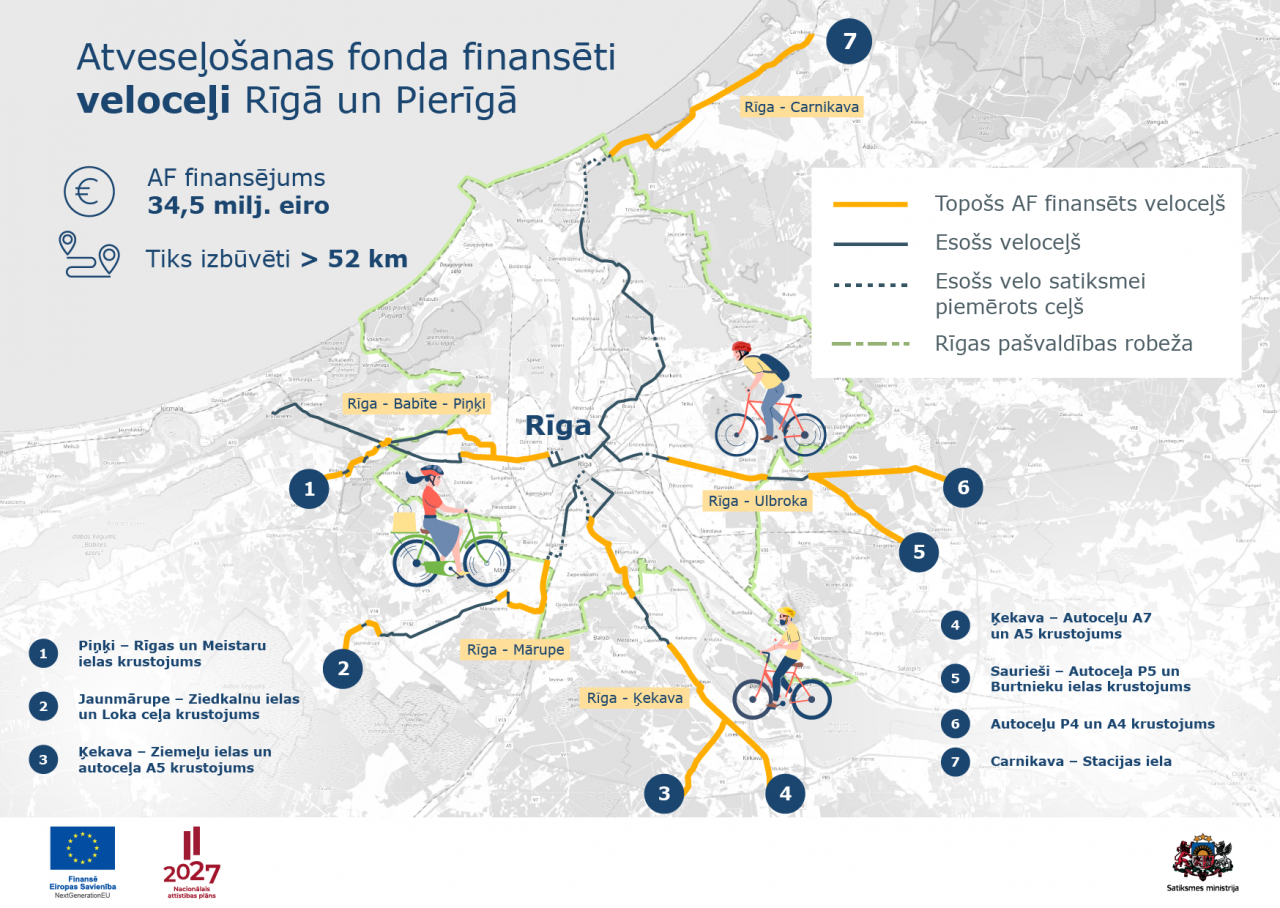On 5 July, the Cabinet of Ministers approved the information report prepared by the Ministry of the Interior regarding the strengthening of the capacity of rescue services, in particular the modernization of the infrastructure and material-technical base of the State Fire and Rescue Service and the implementation of investments. The purpose of the report is to inform about the development measures and investments planned for the strengthening of the capacity of the State Fire and Rescue Service through the Recovery and Resilience Facility.
The purpose of the investment is to ensure the work of equally efficient, rapid and high-quality disaster management services throughout Latvia, by improving the cooperation and coordination of the services involved in response and disaster management. Investments will also improve the working conditions of employees, including job security, which will have a positive impact on the level of worker satisfaction and recruitment.
It is planned to build eight new disaster management centers in Latvia (without others whose construction has already been started), thereby significantly increasing the area of disaster management infrastructure. The overall reduction in CO2 emissions through the construction of 8 disaster management centers is expected to exceed by 20.5% per year the reduction of CO2 that could only be achieved through energy efficiency measures. However, the overall benefit will be wider than the reduction of greenhouse gas emissions from the specific buildings, as the planned investments will also contribute to the country's economic recovery following the effects of the Covid-19 pandemic.
Disaster management centers are planned to be built from Recovery and Resilience Facility in Liepāja, Daugavpils, Madona, Alūksne, Līvāni, Salacgrīva, and possibly, either Tukums and Talsi or Viļāņi and Alsunga, where not only State Police and Emergency Medical Services are scheduled to be deployed in one place, but also the departments of the State Border Guard, the Ministry of the Interior Health and Sport Centre, the Information Centre, the State Agency for Security and the Office for Citizenship and Migration Affairs.
On the other hand, the development of the infrastructure of the home affairs sector from State budget funds is planned for the construction of new disaster management centers in Kandava, Saulkrasti, Rūjiena, Aizpute, Priekule, Dagda, Ilūkste and Iecava. In these centers, both fire depo and State Police and Emergency Medical Service departments are planned to be located in one place.
This will result in the modernization of the infrastructure and technical base of the State Fire and Rescue Service, considering that more than 80% of the State Fire and Rescue Service stations were constructed between 1890 and 1960. According to the Construction State Control Office, the majority of existing State Fire and Rescue Service stations have a high energy consumption – on average 205,83 kWh/m2 per year in total energy consumption, which has consequently a negative impact on climate, and therefore it is necessary to take measures that would lead to lower maintenance costs in the future to a higher greenhouse gas the reduction of emissions in the total proportion of Latvia's green course, while also improving the quality and speed of services equally throughout Latvia.
An ordered infrastructure would make it possible to achieve the efficiency and reactivity rate of the disaster management centers associated with it in disaster and accident prevention, which would reduce the damage caused to nature and man accordingly, while reducing the amount of greenhouse gas emissions caused by disasters and accidents and thereby allowing the achievement of the long-term strategy for renewing the buildings, the National Energy and Climate Plan and Latvia. the 2030 Agenda for Climate Change adaptation targets.
Investments in the State Fire and Rescue Service infrastructure will reduce wildfire burning area, CO2 emissions and protect biodiversity. Wild fires must be defined as peat, dry grass, turf, bushes, trees, grain stubble, wall, rushes and reeds, forest undercover and individual trees.
Investments under the Recovery and Resilience Facility are only part of a broader reform of disaster risk management, which involves the purchase of special vehicles and equipment, the introduction of information technology solutions, the implementation of preventive measures and structural reforms.
It has already been reported that on 14 June the Cabinet of Ministers took note of the information report prepared by the Ministry of the Interior on the implementation of the “Disaster Risk Management System”: https://www.iem.gov.lv/lv/jaunums/pilnveidos-Disaster-Risk-Parvaldiba-sistam-latvia.


